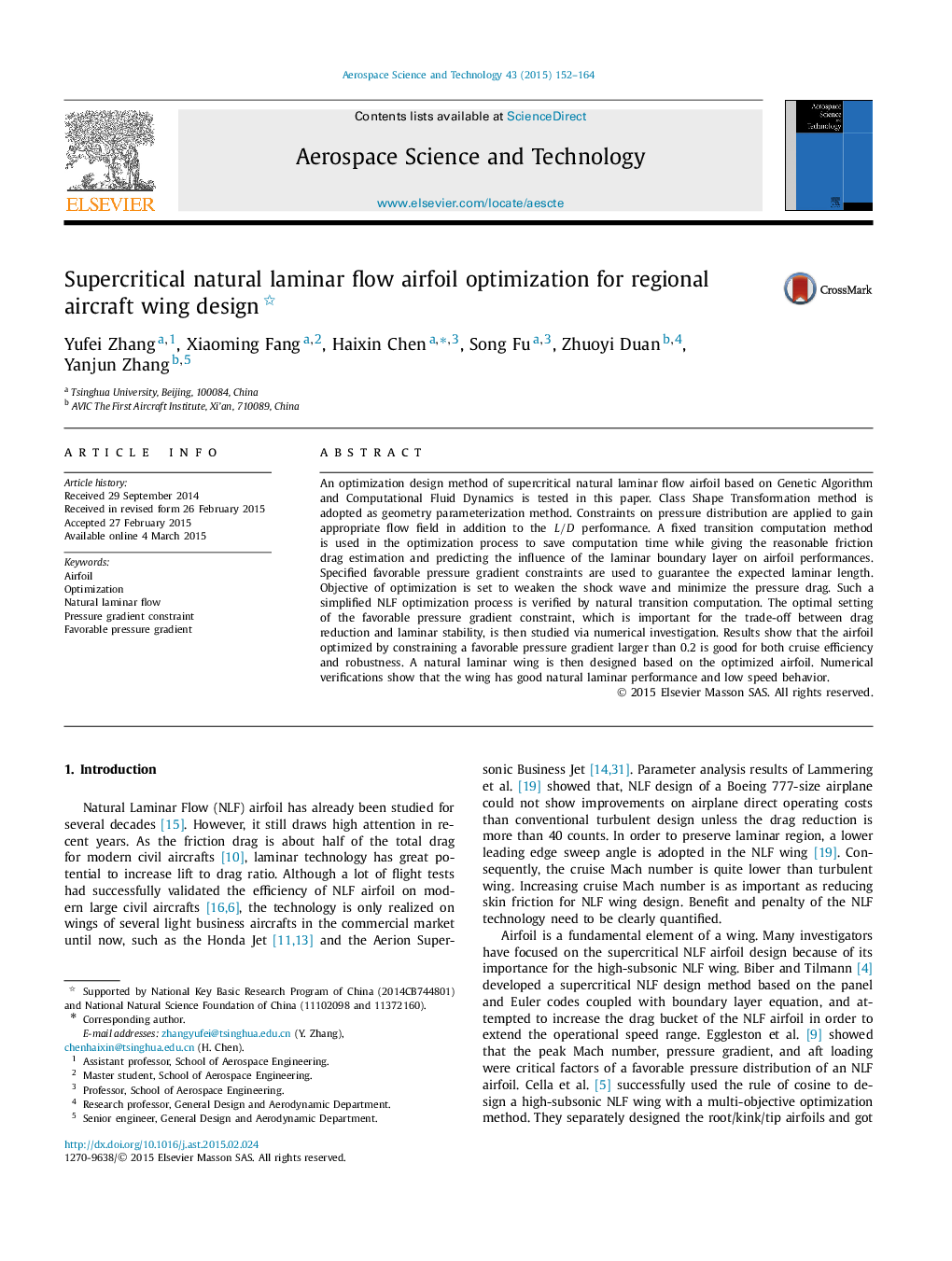| Article ID | Journal | Published Year | Pages | File Type |
|---|---|---|---|---|
| 8058946 | Aerospace Science and Technology | 2015 | 13 Pages |
Abstract
An optimization design method of supercritical natural laminar flow airfoil based on Genetic Algorithm and Computational Fluid Dynamics is tested in this paper. Class Shape Transformation method is adopted as geometry parameterization method. Constraints on pressure distribution are applied to gain appropriate flow field in addition to the L/D performance. A fixed transition computation method is used in the optimization process to save computation time while giving the reasonable friction drag estimation and predicting the influence of the laminar boundary layer on airfoil performances. Specified favorable pressure gradient constraints are used to guarantee the expected laminar length. Objective of optimization is set to weaken the shock wave and minimize the pressure drag. Such a simplified NLF optimization process is verified by natural transition computation. The optimal setting of the favorable pressure gradient constraint, which is important for the trade-off between drag reduction and laminar stability, is then studied via numerical investigation. Results show that the airfoil optimized by constraining a favorable pressure gradient larger than 0.2 is good for both cruise efficiency and robustness. A natural laminar wing is then designed based on the optimized airfoil. Numerical verifications show that the wing has good natural laminar performance and low speed behavior.
Related Topics
Physical Sciences and Engineering
Engineering
Aerospace Engineering
Authors
Yufei Zhang, Xiaoming Fang, Haixin Chen, Song Fu, Zhuoyi Duan, Yanjun Zhang,
